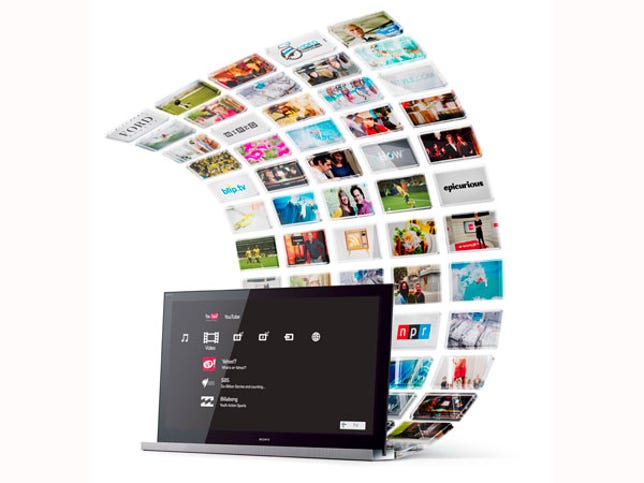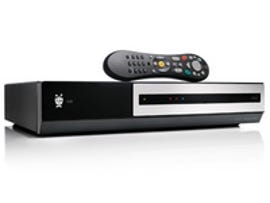IPTV, or internet TV, is a service that enables you to quickly access a wealth of video content and can be as easy to use as turning on your TV.
No matter whether you’re looking to find a quick diversion during your coffee break, to catch up on a show you missed or to sit down to the latest movie blockbuster, it’s all available via a simple internet connection.
But how important is IPTV and how easy is it to set up? We go over the basics, and show that it can be as easy as buying a set-top box.
What is IPTV?
IPTV stands for Internet Protocol Television and since 1995 it’s been used to describe video and related services delivered over the internet. In the past this has meant sites like YouTube or even just videos posted onto website pages.
Ordinarily, to watch internet TV you would need to use an internet browser on a PC, which usually requires extra software called “plug-ins” to work. However, in the past year a multitude of devices has enabled users to watch internet video in the most logical place: on your TV. This is what we’ll concentrate on in this guide.

(Credit: Sony Australia)
How does IPTV work?
It may sound obvious, but in order to get internet TV you will need a broadband internet connection and a router. IPTV is simply video sent over the internet for a PC or other device to receive.
At its very least most set-top boxes and TVs that contain IPTV services will allow access to YouTube, which means you can browse videos with just your remote control! No more mouse or keyboard needed, you can navigate video pages like you would a DVD menu. Apart from YouTube on your TV, others service may include catch-up programming or video-on-demand.
Internet TV by its very nature is proprietary, and is designed to protect the content from piracy. We would argue that most of the pressure for IPTV comes from the free-to-air broadcasters who are keen to stave off the rise of illegal downloads from overseas shows.
While most video services like YouTube enable other sites to “embed” videos on their pages, the video still remains YouTube property. But with living room-based services the controls are much tighter.
While you may be able to get YouTube on your set-top box it’s as a result of a lot of hard work in the background to get it there. Unfortunately, each TV or PVR needs to set-up differently, and this extra work is a major stumbling block for the widespread adoption of IPTV.
In contrast, this is why Google TV as used by Sony holds so much promise: not only is it a single platform, which is great for programmers, but it also enables consumers to use Android apps on their TV!
NB: most IPTV content uses up data allowance from your ISP. Some ISP’s have agreements with IPTV providers to ensure that content is not counted against your data limit. For example, BigPond customers can use BigPond Movies for “free”, while conversely Internode customers can use ABC’s iView data-free. Be aware that some set-top boxes, such as the PS3, may use their own servers and “free” content may actually count against your data allowance. Check with your ISP.
What equipment do I need?
Apart from the traditional method of buying a PC, there are two different ways to watch IPTV services through your television: with the addition of a separate set-top box, or buy a TV with internet services on-board.


Most new Blu-ray players and PVRs have some form of IPTV service on-board and will connect to your network via Ethernet (most common) or wireless (either on-board or via a USB dongle). Some media streaming devices, such as the Apple TV, also allow IPTV capability, but as these tend to cater toward enthusiasts the number of services available is smaller.
Simply connect your device to the internet as you would a notebook and on-board services such as catch-up TV and video-on-demand come to life! You’ll be able to download the latest movies and TV shows, and you don’t need to be an internet engineer to do it! Applicable set-top boxes include FetchTV 2, TiVo and PlayStation 3.
Televisions can also be used to access IPTV services and will carry the following labels:
- LG: NetCast
- Panasonic: VieraCast
- Sony: Bravia Internet Video
- Samsung: Internet@TV
While most internet-connected TVs are upgradeable and are able to enjoy new features for free, if you’re solely interested in future-proofing a stand-alone set-top box is probably the most sensible option.
IPTV services are still relatively new, and as we’ve already discussed there are no clear standards. If you spend three grand or more on a TV, there’s no way to tell if it will keep up with any features that may be introduced in the next few years. Buying a set-top box is much cheaper, and having to buy a new one down the track is a lot less painful.
Of course, the upside of buying a new TV is … you have a new TV! As with any purchase, waiting till “next year” is never a good idea, if you need a new TV do your research and get one. Hoping for something better around the corner is fruitless as there is always something better coming. It’s much better to buy something you like now and get good use out of it.
What sort of content is available?
IPTV content can be roughly broken up into three different types: short (YouTube clips, music videos), medium-to-long (TV shows, specialist videos such as “how to’s”, and movies) or as “streams” (longer, more traditional channels or event-based videos).
These videos are available on a wide number of services, but for the purposes of this article we’re going to categorise the services as belonging to one of three main groups:
-
Catch-up
Catch-up services are currently the most common version of IPTV in Australia. Commonly they are set up by the channels themselves so that users who miss a particular program can watch it later. Usually, customers will be able to watch the show for free for up to a week after the program airs. Sometimes, the catch-up service will even be used to debut a new show before it goes to air, eg, the Season 5 premiere of Doctor Who debuted on ABC’s iView service two days before it was on TV.Examples: Fixplay.com.au, ABC iView, Plus7
-
On-demand
In comparison to catch-up, the number of video-on-demand services is much fewer, with the standout being the BigPond Movies portal. At present the BigPond service is available on the web, the Telstra T-Box and through a select number of LG devices, but Telstra has plans to expand this in the future.On-demand services usually attract a fee, but the upside is that content is available for a much longer period than on catch-up.
Examples: BigPond Movies, Sony PlayStation Network
-
Streaming
This category is rather broad but can be loosely used to describe the rest of internet-based content. It’s video that is kept on the remote computer and isn’t downloaded to your TV or computer. It may include freely available content on traditional video sites like YouTube or contain “streaming” channels from a subscription service like FetchTV.But YouTube is no longer just about puppies doing cute stuff, it has also streamed live cricket matches from the Indian Premier League as well as now hosting whole ABC programs.
Examples: YouTube (FetchTV), VidZone (PS3)
What is the quality like?
Depending on the service you choose, the quality of the content varies from “web quality” to indistinguishable from free-to-air. Unfortunately, there is no real way of knowing what a program’s going to look like until you actually commit to it. While many programs are supposedly in “standard definition”(SD) the main issue is with “bitrates”. The image may be big enough to fill your screen but compressed so much it looks blocky: the higher the bitrate the better it looks, but of course the bigger the file.
Unless your ISP gives you a particular service “quota free” you can expect an hour of SD content to take up about 800MB of your download limit. HD downloads are still fairly rare but expect them to chew up about twice this — 1.5GB per hour — for a 720p file.
How much does it cost?


Depending on the service you use, content is either free, attracts a one-off charge or is part of a subscription.
Catch-up programs like Yahoo7’s Plus7 and ABC iView don’t usually attract a fee as they are sponsored or free anyway, and usually expire a week after the show debuts on-air.
By contrast, most on-demand movies cost extra, and this is usually between AU$3.95 for older titles and up to AU$6.95 for new releases in high definition. The same applies for “older” TV shows, which cost about AU$2 each — some services enable you to download whole seasons for a set charge.
If you choose a subscription service, costs depend on whether you’re using an internet-only service or whether you are also paying a monthly hardware cost. For example, FetchTV through iiNet requires users to have the BoB service plus an additional AU$29.95 a month. This gives users access to a number of “cable” channels and movies on-demand.
What are the drawbacks?
While there are many benefits to IPTV, it does have its downsides.
- Licensing is still an issue in Australia, as while the US has a multitude of services such as Hulu and Netflix for movies and even Pandora and Spotify for music there are no such streaming options for Australia. Companies in Australia are able to pay for the ability to distribute chosen content exclusively in this country: whether it be in the form of a television broadcast, a cinema release or simply in disc form. Making streaming agreements between these Australian-only companies and overseas content networks obviously takes some time. While the formation of worldwide licences for all content would help ease this, it leads us to our next point.
- IPTV has the potential to be devastating to the production of local content; if you could get a show from anywhere in the world at any time, why would you bother with an Australian show or movie?
- IPTV is still a relatively interactive medium — you have to choose programs you want to watch — and if you just want to turn it on and simply vegetate, then free-to-air or to a lesser extent cable is still better for this.
Why do I need it?
While still in its early stages, we can see a time when IPTV services are the primary source of entertainment on your TV. Why wait till 7.30pm on a Thursday to watch your favourite program when you can download the newest episode straight away, and legally?
In the future, it won’t only be the television stations that are available on IPTV but any and every media outlet that produces video will conceivably have its own IPTV “channel”. This means that your choices are no longer limited to the latest episode of Packed to the Rafters or Keyboard Cat.
With the National Broadband Network in the early stages of roll-out and the prices for large amounts of data insanely low in the very near future, IPTV is going to be viable for every Australian. Soon you won’t even need an antenna — just a fast connection to the internet. While this may have the television channels running scared right now this can only mean more choice and cheaper prices for us as consumers.
Look out shortly for Part II where we go through popular TVs and set-top boxes, and detail the different services available on each.




